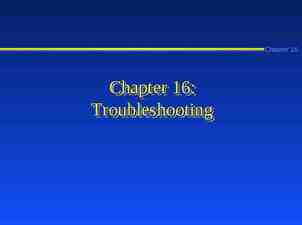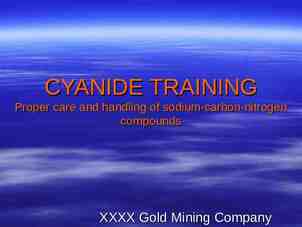Sixth Northwest Conservation & Electric Power Plan Adding
16 Slides242.00 KB
Sixth Northwest Conservation & Electric Power Plan Adding Incremental Flexibility to the Pacific Northwest Power System? Maury Galbraith Northwest Power and Conservation Council Portland, OR August 21, 2008
System Flexibility Defined in Terms of Ancillary Services: Continuous Response: – Regulation – Load Following Contingency Response: – Spinning Reserve – Non-spinning Reserve – Replacement (Supplemental) Reserve Other Services: – Voltage Control – Black Start Northwest Power and Conservation Council July 17, 2008 2
Regulation Services: Regulation is the use of online generation that is equipped with automatic generation control (AGC) to track the moment-to-moment fluctuations in customer loads and generation – Compensates for short-term largely random fluctuations in load and generation – Automatic: Requires AGC – Response Speed: 1 minute – Duration: minutes Northwest Power and Conservation Council July 17, 2008 3
Load Following Services: Load Following is the use of online generation to track the intra- and inter-hour changes in customer loads and generation – Compensates for larger, slower and generally predictable swings associated with the daily load cycle or wind generation ramping events – Can be manual – Response Speed: 10 minutes – Duration: 10 minutes to hours Northwest Power and Conservation Council July 17, 2008 4
Scheduling and Load Balancing in the Pacific Northwest: 90 80 Regulation Up 70 Intra-hour Load Following MW 60 50 Inter-hour Load Following Regulation Down 40 30 20 10 0 -20 -15 -10 -5 0 5 10 15 20 25 30 35 40 45 50 55 Previous Schedule Northwest Power and Conservation Council Final Schedule 0 5 10 Actual Generation July 17, 2008 5
Control Area Operation: Operators focus on maintaining the net interchange with neighboring Control Areas at the final scheduled amount – Accurately measuring net load is difficult because of large number of loads and system losses – Easier to accurately measure flows on tie lines to neighboring Control Areas because of small number of lines Northwest Power and Conservation Council July 17, 2008 6
NERC Control Performance Standards: Impossible to perfectly match generation and load NERC has established Control Performance Standards (CPS) to determine the amount of imbalance the is permissible for reliability purposes System frequency is the fundamental indicator of Interconnection health – Frequency drops when load generation – Frequency rises when load generation – Target 60 Hz Northwest Power and Conservation Council July 17, 2008 7
NERC Control Performance Standards: Area Control Error (ACE) is a measure of a Control Area’s contribution to Interconnection health – ACE is negative when load generation (under-generation) – ACE is positive when load generation (over-generation) – ACE is zero when load generation CPS1 is an annual standard that measures the relationship between the Control Area’s ACE and the Interconnection frequency. CPS2 is a monthly standard that limits the Control Area’s maximum ACE. Northwest Power and Conservation Council July 17, 2008 8
Implications of NERC CPS for the Provision of Incremental System Flexibility: Load and generation volatility is important to a Control Area if it affects CPS performance and the costs of staying within NERC CPS bounds CPS compliance is Pass/Fail – Must simultaneously satisfy both CPS1 and CPS2 – Reducing ACE is of little benefit unless the reduction moves the Control Area from non-compliance to compliance CPS compliance is measured over long time frames – Good performance can offset poor performance Northwest Power and Conservation Council July 17, 2008 9
Does the Region Need to Augment Power System Flexibility? Continued growth of wind generation is likely to increase the need for incremental system flexibility Appears to be the most significant factor – Typically adds generation volatility at the seconds to minutes time scale increasing the demand for regulation – Increases the frequency and sometimes the magnitude of subhourly and hourly ramping events increasing the demand for load following – The need to shape wind output to load over longer time scales may increase the value of some energy storage alternatives Environmental constraints are likely to continue to constrain existing hydro system flexibility – The tradeoff between system flexibility and environmental protection is not well-understood Northwest Power and Conservation Council July 17, 2008 10
Sources of Incremental System Flexibility See: Wind Integration Action Plan – Appendix D Generation Technologies Storage Technologies Demand-side Options System Operation Options Northwest Power and Conservation Council July 17, 2008 11
Generation Technologies Status Flexibility Application SCCT (e.g. LM6000, LMS100) Mature Reg/ LF Reciprocating Engines Mature Reg/ LF Duct Firing Added to CCCT Mature Reg Capacity Added to Existing Hydro Projects Mature Reg/ LF Northwest Power and Conservation Council July 17, 2008 12
Storage Technologies Status Flexibility Application Pumped Storage Hydro Mature Reg/ LF Batteries - Conventional Mature Reg/ LF Batteries – Flow/Redox Beta Reg/ LF Early Commercial Reg/ LF In Development Reg/ LF Mature for Cavern Reg/ LF Batteries - NAS Capacitors/ Ultracapacitors Compressed Air Plug-in Hybrid Electric Vehicles Northwest Power and Conservation Council Conceptual July 17, 2008 13
Demand-side Options Status Flexibility Application Load Interruption Rights Mature LF Dispatchable Distributed Generation Mature LF Dispatchable Load Cycling Mature Reg/ LF Northwest Power and Conservation Council July 17, 2008 14
System Operation Options AGC Added to Existing Resources ACE Diversity Exchange Standardized Ancillary Services Contracts Status Flexibility Application Mature Reg In Development Reg/LF Reg/LF Improved Wind Prediction Northwest Power and Conservation Council July 17, 2008 15
Discussion Points: Have we accurately characterized the system flexibility issues? Have we listed all of the major options available to increase system flexibility? How should we prioritize our investigation of the issues and options? Northwest Power and Conservation Council July 17, 2008 16





















